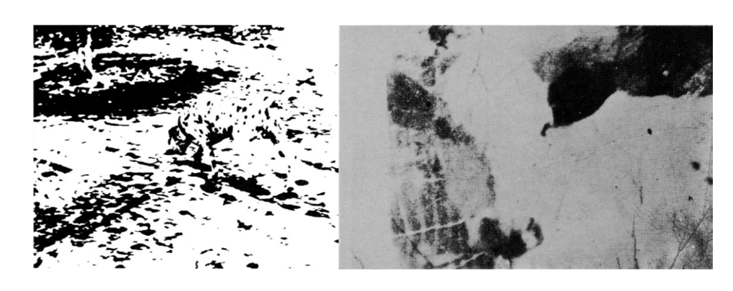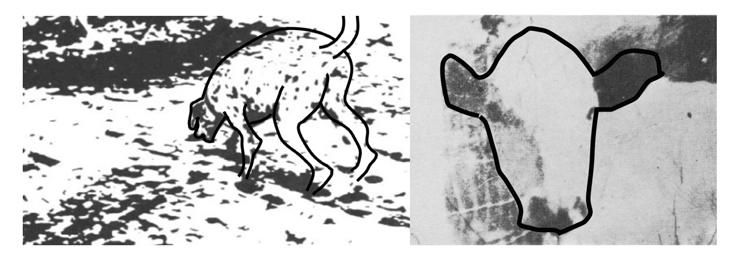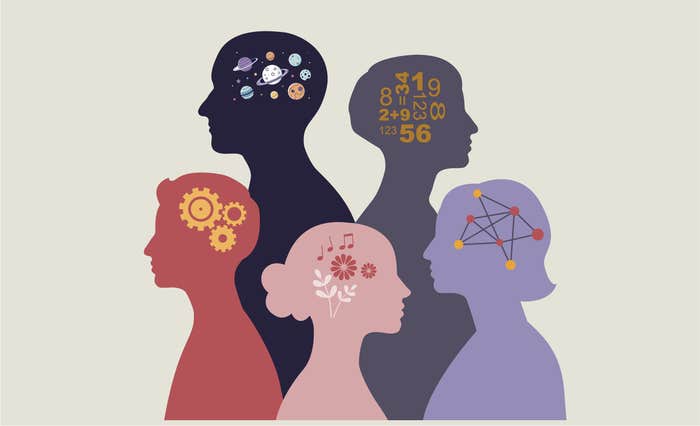The great French mathematician and physicist Henri Poincaré (1854–1912) took a particular interest in the origins of his own astonishing creativity. His achievements were impressive: His work profoundly reshaped mathematics and physics—including laying crucial foundations for Einstein’s theory of relativity and the modern mathematical analysis of chaos. But he also had some influential speculations about where many of his brilliant ideas came from: unconscious thought.
Poincaré found that he would often struggle unsuccessfully with some mathematical problem, perhaps over days or weeks (to be fair, the problems he got stuck on were difficult, to say the least). Then, while not actually working on the problem at all, a possible solution would pop into his mind. And when he later checked carefully, the solution would almost always turn out to be correct.
How was this possible? Poincaré’s own suspicion was that his unconscious mind was churning through possible approaches to the problem “in the background”—and when an approach seemed aesthetically “right,” it might burst through into consciousness. Poincaré believed that this “unconscious thought” process was carried out by what might almost be a second self, prepared and energized by periods of conscious work, yet able to work away on the problem in hand entirely below the level of conscious awareness.
Why do solutions to problems suddenly pop into our minds?
The notable 20th-century German composer Paul Hindemith, in his book A Composer’s World, reports a similar belief, with a striking metaphor. “We all know the impression of a very heavy flash of lightning in the night. Within a second’s time we see a broad landscape, not only in its general outlines but with every detail,” Hindemith writes. “If we cannot, in the flash of a single moment, see a composition in its absolute entirety, with every pertinent detail in its proper place, we are not genuine creators.”
Taken literally, Hindemith’s claim would seem to imply that the entire process of composition is the work of the unconscious—the complete score is, it seems, worked out by subterfuge by unconscious processes, only to break forth into consciousness in a moment of spectacular incandescence. The unconscious work complete, the composer needs merely to go through the laborious process of transcribing the already finished work onto paper, a humdrum activity indeed, given that the creative labor has already been done. Hindemith’s conception of the composing of processing is all the more remarkable in the light of the extreme complexity and idiosyncrasy of the musical system governing his own pieces.
Let us, for contrast, consider “insight” of a much more prosaic kind, in our struggle to make sense of apparently baffling images. You may have seen one or both of the pictures in Figure 1 before. If you have, you will immediately know what they represent. If not, they will almost certainly seem to you to be nothing more than a baffling jumble of speckles, marks, and smudges.

If initially these make no sense, spend a minute or two inspecting them closely—if you are lucky, you may experience a rather delightful feeling when, suddenly, their interpretation “pops out” (spoiler alert! don’t look below until you have finished examining the images in Figure 1). If you haven’t seen these pictures before, don’t give up too soon. You may find that, even after a minute or two of bafflement, you find the pictures suddenly make sense—and when they do, the pattern will seem so obvious that you may wonder how you could possibly not have spotted it right away. If you are still mystified after a couple of minutes, you can look to Figure 2, in which all is revealed.
The left image shows a Dalmatian dog sniffing the ground; the right-hand picture is a “portrait” of a cow. Obvious once you see them—and once seen, they can’t be unseen. These images will be easy to make sense of, if you next see them years or decades in the future.
When the object does suddenly “pop out,” we have a sense of sudden insight, but no idea how to explain where it came from. Without warning, order emerges from chaos. We have no sense of getting “warmer” or “colder” before insight suddenly hits us—we have a sense of floundering aimlessly, followed, if we are lucky, by what feels like a “bolt from the blue” of sudden understanding. The problem is solved not by a sequence of steps, getting ever closer to the answer. Quite the opposite: The cycle of thought churns on and on, exploring different possible organizations with no sign of progress until, suddenly, and within a single step, it chances upon the solution.
Now, imagine that, rather than allowing you to inspect these images continuously for many seconds or minutes, I had shown them briefly (perhaps just a few seconds at a time) once a week. Eventually, on one of these occasions, a Dalmatian would spring into view; on another, you would be confronted with the sad and steady gaze of the cow. These moments of sudden insight might seem to demand an explanation: You would ask, “Why does the image make sense now, when it made no sense before?”
A natural answer might suggest itself: “I must have been unconsciously working away on these images—and solved or partially solved the mystery without even knowing it. Then the answer ‘broke through’ into consciousness, when I saw the image again.” Yet this would be quite wrong—the same sudden “pop out” occurs when we continuously contemplate the image, and there has been no opportunity for unconscious background pondering. The phenomenon of sudden insight stems not from unconscious thought, but from the nature of the problem: Searching for a meaningful interpretation with few helpful and unambiguous clues.
These sudden flashes of visual insight, which could so easily be misattributed to unconscious thought, should make us skeptical of the unconscious origins of other flashes of insight in mathematics, science, or music. Introspection, even the introspection of geniuses, is not to be taken at face value.
The brain is a cooperative computing machine—large networks of neurons collectively piece together the solution to a single problem. Importantly, the cycle of thought proceeds one step at a time. The brain’s networks of neurons are highly interconnected, so there seems little scope for assigning different problems to different brain networks. If interconnected neurons are working on entirely different problems, then the signals they pass between them will be hopelessly at cross-purposes—and neither task will be completed successfully: Each neuron has no idea which of the signals it receives are relevant to the problem it is working on, and which are just irrelevant junk. If the brain solves problems through the cooperation computation of vast networks of individually sluggish neurons, then any specific network of neurons can work on just one solution to one problem at a time.
Even the introspection of geniuses is not to be taken at face value.
Solving difficult problems, whether mathematical, musical, or of any other kind, is the very antithesis of a routine, specialized problem with a dedicated brain network: On the contrary, thinking about such problems will need to engage most of the brain. So the idea that profound unconscious thought can be “running in the background” as we go about our everyday lives is fanciful indeed. Routine and highly practiced activities aside, the cycle of thought can attend to, and make sense of, only one set of information at a time.
Poincaré and Hindemith cannot possibly be right. If they are spending their days actively thinking about other things, their brains are not unobtrusively solving deep mathematical problems or composing complex pieces of music, perhaps over days or weeks, only to reveal the results in a sudden flash. Yet, driven by the intuitive appeal of unconscious thought, psychologists have devoted a great deal of energy in searching for evidence for unconscious mental work. Other researchers have, though, a simpler explanation, which involves no unconscious thought at all.
Let’s consider why one gets stuck with a difficult problem in the first place. What is special about such problems is that you can’t solve them through a routine set of steps—you have to look at the problem in the “right way” before you can make progress (e.g., with an anagram, you might need to focus on a few key letters; in deep mathematics or musical composition, the space of options might be large and varied). So ideally, the right approach would be to fluidly explore the range of possible angles on the problem, until hitting on the right one. Yet this is not so easy: Once we have been looking at the same problem for a while, we feel ourselves stuck or going round in circles.
Mental cul-de-sacs occur when our brains fail to find a satisfactory analysis or interpretation. Conscious attempts to clear the cul-de-sac can, of course, often be successful: We jettison some information, and focus instead on slightly different information. We focus on different parts of a cryptic crossword clue (perhaps the word “jumble” means this is some kind of anagram). We actively dredge up different pieces of knowledge that we think might help us. (“Oh—this looks like a geometry problem with circles and angles; I learnt about circle theorems at school; what were they all about?”) All too often, though, such deliberate attacks on a problem fail. Indeed, we can find ourselves endlessly going down the same mental cul-de-sacs, such as when I search for the word artichoke, where my typical internal dialogue is something like: “No, not avocado! Not asparagus! Not aubergine! And certainly not aspidistra! Help!”
Breaking out of mental cul-de-sacs is precisely what a break will give us. A clear mind is more likely to succeed than a mind filled with partial solutions and suggestions which have clearly failed. And, by sheer chance, we might even bump into a clue that helps. But probably the most important aspect of setting a problem aside is that, when we return to it, we see it afresh unencumbered by our previous failed attempts. Often, our new perspective will be no more successful than the old, but, now and again, we will chance on the right perspective—the pieces of the mental puzzle will suddenly snap into place.
Now and again, of course, thoughts do spontaneously “pop into our minds”—names we had struggled to remember, things we have forgotten to do, and occasionally even insights into tricky problems with which we have been struggling. But this isn’t the product of unconscious, background thought. It arises when we momentarily flip back to thinking about an old problem for a moment and, now free of the unhelpful mental loops which got us stuck in the first place, we almost instantly see a solution that had evaded us before—or, in some cases, dimly suspect where such a solution might lie. The “almost instantly” is key: The answer hits us fast, before we are even aware we have returned to the problem. This sensation of sudden insight never occurs for problems that can’t, if looked at the right way, be solved—or partially solved—in a flash. Suppose I try and fail to calculate 17 x 17 in my head; there is no chance that, while idly waiting at a bus stop, I’ll suddenly think “I bet its 289!”

Poincaré’s description of his particular method of solving mathematical problems suggests why he was particularly susceptible to brilliant flashes of insight. His strategy was to work out the outlines of the solution, without pen and paper; and only then to, somewhat laboriously, translate his intuitions into the symbolic language of mathematics, to be checked and verified. Crucially, for Poincaré, mathematical problems were transformed into perceptual problems: and with the right perceptual intuition, the creating a proof would be relatively routine, if slow. A perceptual problem is just the kind of problem that can be solved in a single mental step—provided that we happen to lock onto just the right information and see the pattern in that information in just the right way like the Dalmatian and doleful cow.
Poincaré’s mathematical brainwaves, like the sudden resolutions of the initially baffling Dalmatian or cow images, are fundamentally perceptual. Crucially, in neither case is the sudden revelation the product of hours or days of unconscious thought. Instead, the solution is found in a single mental step when we contemplate the problem again. Having broken free of our previous and incorrect analysis, by happy chance our brains alight upon the correct solution.
This viewpoint is nicely illustrated by one of the most celebrated stories of scientific insight: the discovery of the structure of benzene by the great 19th-century chemist August Kekulé. The brainwave struck as he was having a daydream in which a snake began to swallow its own tail. It suddenly struck Kekulé that benzene might itself have a circular structure; and before long he had worked out his detailed analysis of the chemical structure of the benzene ring.
Yet his momentary insight was surely a suspicion that the structure of benzene might be circular; and surely he must have followed endless false trails before alighting on the correct answer. Indeed, Kekulé only knew he had the correct answer after carefully piecing together the detailed structure of the benzene ring, and checking that it worked. So the “flash of inspiration” is often perhaps better termed a “flash of suspicion.” On those rare occasions when the flash of suspicion turns out to be justified, it is so easy to have the illusion that one’s brain had somehow worked out the complete answer, and checked it in detail, before suggesting it to the conscious mind. And if that were true, this chain of events would, of course, require unconscious thought, and lots of it. But the checking and analysis comes after the momentary mental flash, not before.
We might wonder how it is that the right perceptual interpretation happens to come to mind. Could it be that, while we may be unable actively to pay attention to more than one thing at a time, our brains can unconsciously search our mental archives, pulling out, as it were, useful files for later use? If so, then Poincaré’s unconscious could perhaps have been running through potentially relevant bits of higher mathematics, stored over a lifetime of study. Then, on returning to a problem, some vital clues to the solution might have been ready to hand—and a flash of insight would result. Perhaps the brain can’t solve a problem unconsciously, but unconscious activation of relevant memories might prepare the ground for finding the solution.
Can we find evidence for unconscious memory search? With my colleagues Elizabeth Maylor and Greg Jones at the University of Warwick, I carried out an experiment some years ago that tested whether unconscious memory searches can help out the conscious mind.
A “flash of inspiration” is better termed a “flash of suspicion.”
Rather than choose deep mathematical reasoning, we chose the simplest possible task: retrieving familiar words from memory. Suppose, for example, that I ask you to name as many foods as you can. Despite the vastness of your food vocabulary, you will almost certainly find yourself slowing down surprisingly quickly, with flurries of fruits, bursts of baked goods, and surges of seasonings, punctuated by surprising, and ever longer, silences. Suppose, instead, I ask you to name as many countries as you can. Although there are 200 or so countries recognized by the United Nations, most of which will be familiar to you, you will, again, struggle sooner than you might expect.
But what if I asked you to name as many food items or countries as possible? The only way to do this is to focus on foods for a while, and then move over to countries when foods are getting tricky, and then back to foods again when you are running out of countries—and so on. This is interesting in itself—perhaps indicating that our memories are organized so that foods are linked to other foods, and countries are linked to other countries. But this switching strategy is also interesting for another reason: It provides a way of finding out how far we are able to continue to search for the category we are not currently generating.
If unconscious thought is impossible, any background racing around our mental archives is entirely ruled out. That is, if we are scouring our memories for foods, we cannot simultaneously search for countries, and vice versa. If so, we should generate foods or countries more rapidly than we can generate one or the other alone.
Suppose, instead, that while focusing our conscious minds on generating foods, unconscious mental search processes can work away, in the background, unearthing a string of countries. Then, when we switch to countries, we should be able rapidly to download these—they would not need to be found afresh, because unconscious search would have identified them already. If it is indeed possible to search for foods or countries simultaneously (even though we can consciously report the results of only one search at a time), then the rate at which we generate answers in both categories should be substantially greater than the rate at which we can generate answers from either category alone.
Across a wide range of test stimuli, the results were unequivocal: There is absolutely no sign that we can search for x’s when we are currently thinking about y’s; or search for y’s when we have been thinking about x’s. As soon as we switch from searching one category to searching another, all search processes for that first category appear to cease abruptly. While it would be highly advantageous for an unconscious process to keep running in the background, there is absolutely no evidence that this occurs.
An active unconscious, able to amplify the power of our limited conscious minds, would be a wonderful boon, working away on countless difficult problems, while we go about daily lives; and overcoming the slow step-by-step flow of conscious thought. But unconscious thought is, for all that, nothing more than a myth, however charming.
Nick Chater is the author of The Mind Is Flat: The Remarkable Shallowness of the Improvising Brain. He is a professor of behavioral science at Warwick Business School and co-founder of the research consultancy Decision Technology Ltd. He has contributed to more than 200 hundred articles and book chapters and is author, coauthor, or coeditor of 14 books.
Excerpted from The Mind Is Flat: The Remarkable Shallowness of the Improvising Brain, by Nick Chater, published by Yale University Press. Reproduced with permission of Yale University Press. All rights reserved. No part of this excerpt may be reproduced or reprinted without permission in writing from the publisher.


























